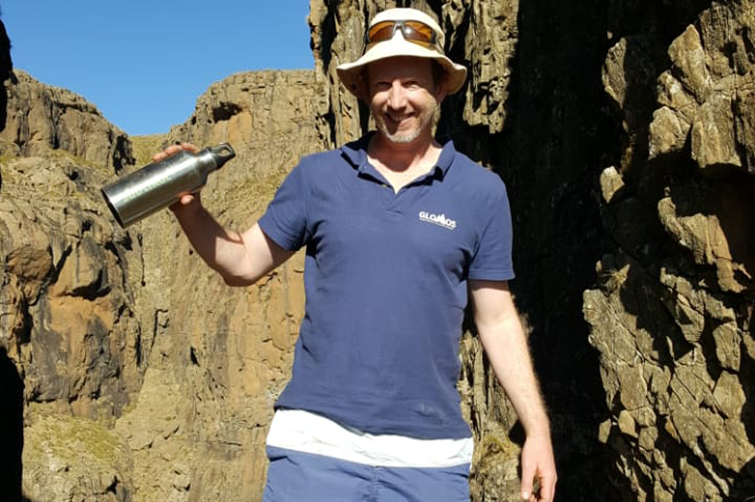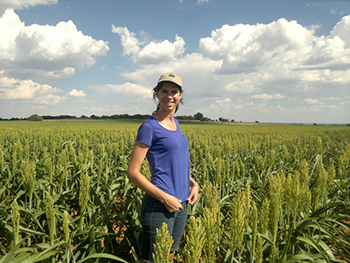Latest News Archive
Please select Category, Year, and then Month to display items
11 January 2021
|
Story André Damons
|
Photo Supplied
 Dr Ralph Clark
Dr Ralph Clark
The Afromontane Research Unit (ARU), the flagship research group of the University of the Free State (UFS) Qwaqwa Campus, has recently been granted R8,4 million to establish a Risk and Vulnerability Science Centre programme.
The Risk and Vulnerability Science Centre (RVSC) programme was established by the Department of Science and Innovation (DSI) as part of the Global Change Research Plan for South Africa and is funded by the DSI through the National Research Foundation (NRF). The RVSC will focus on the need to generate and disseminate knowledge about risk and vulnerability on global change challenges faced by local policy makers/ governance structures and communities in South Africa.
Invited to participate
Dr Ralph Clark, Director of the ARU, says the UFS, together with the University of Zululand and the Sol Plaatje University, has been invited to participate in Phase 2 of the RVSC programme. Dr Clark was approached by the DSI (on referral from the South African Environmental Observation Network – SAEON) in February 2020 regarding the potential for establishing a RVSC at the UFS Qwaqwa campus.
Subsequent interactions were held between the UFS and DSI, and in March 2020, the UFS formally accepted the DSI invitation. It has since been agreed that the RVSC: UFS will be hosted as a RVSC under the ARU umbrella, with dedicated personnel embedded at the UFS in this regard (internal processes and reporting) but reporting directly to the NRF regarding the RVSC.
Interest and support welcomed
Dr Clark welcomed this interest and support from the DSI-NRF, saying that the funds will further assist the UFS in growing its excellent and growing research portfolio and building more research capacity on this traditionally undergraduate-focused campus. “The RVSC will contribute to much-needed solutions in an area marked by major sustainability challenges and will assist in moving Phuthaditjhaba away from its negative apartheid history towards becoming a sustainable African mountain city,” says Dr Clark.
Researcher works on finding practical solutions to plant diseases for farmers
2017-10-03

Lisa Ann Rothman, researcher in the Department of
Plant Sciences.
Photo: Supplied
Plant disease epidemics have wreaked havoc for many centuries. Notable examples are the devastating Great Famine in Ireland and the Witches of Salem.
Plant diseases form, due to a reaction to suitable environments, when a susceptible host and viable disease causal organism are present. If the interactions between these three factors are monitored over space and time the outcome has the ability to form a “simplification of reality”. This is more formally known as a plant disease model. Lisa Ann Rothman, a researcher in the Department of Plant Sciences at the University of the Free State (UFS) participated in the Three Minute Thesis competition in which she presented on Using mathematical models to predict plant disease.
Forecast models provide promise fighting plant diseases
The aim of Lisa’s study is to identify weather and other driving variables that interact with critical host growth stages and pathogens to favour disease incidence and severity, for future development of risk forecasting models. Lisa used the disease, sorghum grain mold, caused by colonisation of Fusarium graminearum, and concomitant mycotoxin production to illustrate the modelling process.
She said: “Internationally, forecasting models for many plant diseases exist and are applied commercially for important agricultural crops. The application of these models in a South African context has been limited, but provides promise for effective disease intervention technologies.
Contributing to the betterment of society
“My BSc Agric (Plant Pathology) undergraduate degree was completed in combination with Agrometeorology, agricultural weather science. I knew that I wanted to combine my love for weather science with my primary interest, Plant Pathology.
“My research is built on the statement of Lord Kelvin: ‘To measure is to know and if you cannot measure it, you cannot improve it’. Measuring the changes in plant disease epidemics allows for these models to be developed and ultimately provide practical solutions for our farmers. Plant disease prediction models have the potential ability to reduce the risk for famers, allowing the timing of fungicide applications to be optimised, thus protecting their yields and ultimately their livelihoods. I am continuing my studies in agriculture in the hope of contributing to the betterment of society.”